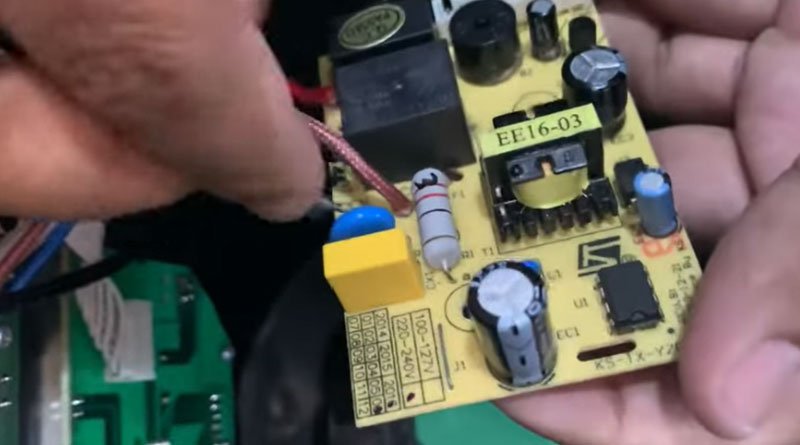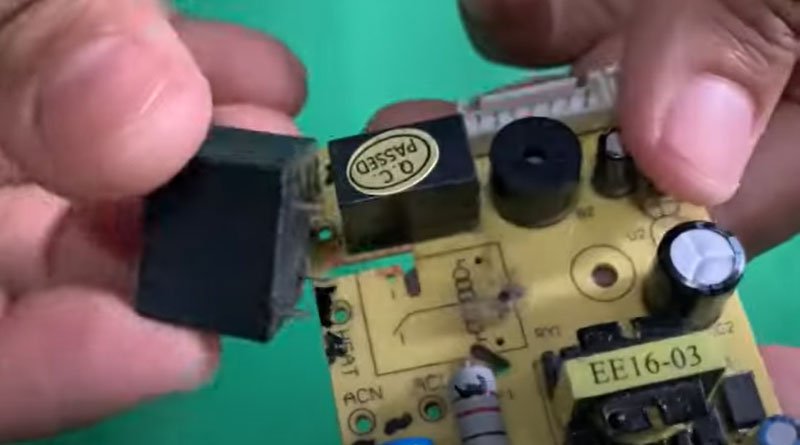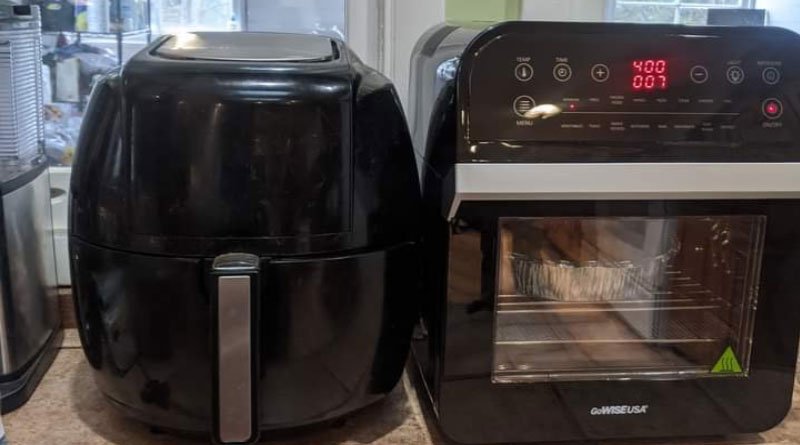How to Check Heating Element in Air Fryer: Expert Technique
By adding “How to Check Heating Element in Air Fryer” into your regular maintenance routine, you not only ensure consistent cooking excellence but also potentially prevent more significant issues down the road. Embarking on a culinary journey with an air fryer brings the promise of quick, efficient, and delectably crispy meals. Central to the magic of this kitchen marvel is its heating element, a silent powerhouse responsible for transforming your favorite dishes into golden perfection.
To ensure your air fryer consistently delivers on its culinary potential, it’s essential to grasp the significance of maintaining a healthy heating element. Regularly checking the condition of the heating element is a fundamental step in troubleshooting and preventing potential issues.
In this guide, we will explore simple yet effective methods to inspect and verify the health of the heating element in your air fryer, allowing you to enjoy consistently delicious and evenly cooked meals.
Step-by-step Guide on How to Check Heating Element in Air Fryer
To check the heating element of your air fryer, you will need the following tools:
1. Screwdriver: To open the air fryer and access the heating element.
2. Multimeter: This tool is used to check the continuity of the heating element. If there’s a break in the circuit within the heating element, your multimeter will show no continuity, which means the heating element is faulty.
3. Protective gloves: Protecting your hands when working with electrical appliances is essential.
4. Flashlight: A flashlight can help you see the heating element clearly, mainly if it’s located at the back or bottom of the air fryer.
5. Cleaning materials (optional): If the heating element is covered in grime or food particles, you may need a soft brush or cloth and a mild cleaning solution.
When facing issues with your air fryers heating element, there are several steps you can follow to identify and possibly rectify the problem.
Step 1: Unplug the Air Fryer
Safety first. Before you start, unplug the air fryer from the power outlet to avoid any electrical shocks.
Step 2: Check Electrical Connections
Once safely unplugged, check all visible electrical connections. This includes the power cord and plug. Ensure they are intact and not frayed or damaged.
Step 3: Inspect for Visible Damage
Look over the entire appliance for any signs of visible damage, like burns, discoloration, or warping. These could be signs of overheating or other issues that may affect the heating element.
Step 4: Remove the Basket and Pan
Remove the food basket and pan from the air fryer. This gives you clear access to the heating element.
Step 5: Locate the Heating Element
The heating element is usually located at the bottom or top of the air fryer. You should turn your air fryer upside down if it’s at the bottom. Use your flashlight if it’s hard to see.
Step 6: Examine the Heating Element for Visible Damages
Check the heating element for any visible signs of damage, such as burns, blisters, or cracks. Also, look for any food particles or grime that could affect its performance. Clean it with a soft cloth and a mild cleaning solution if it’s dirty.
Step 7: Test the Heating Element with a Multimeter
If there are no visible damages, the next step is to test the heating element for continuity using a multimeter. For Ohms of resistance, set your multimeter to the lowest setting. Then, touch one probe to each of the heating element’s terminals. A low reading means your heating element is good, while a high reading or ‘OL’ indicates the heating element is faulty.
Step 8: Seek Professional Help if Needed
If the heating element is damaged or you need clarification on any part of this process, it’s best to consult a professional. Only attempt to repair or replace the heating element if you’re confident.
Remember always to handle electrical appliances carefully and follow the manufacturer’s instructions.
Problem of Hitting an Element in an Air Fryer
Several other issues can occur with the heating element in an air fryer, including thermostat malfunctioning, wire alignment issues, uneven cooking, and overheating problems.
A malfunctioning thermostat can disrupt the heating process as it controls the temperature inside the air fryer. If it’s not working correctly, the air fryer might not heat up to the desired temperature or overheat, which can affect the cooking results.

Wire alignment issues can also affect the heating element’s performance. If the wires connected to the heating element are loose, disconnected, or misaligned, the air fryer cannot heat up correctly.
Uneven cooking is another common issue that a faulty heating element can cause. If the heating element isn’t evenly distributing heat, it can lead to food cooked more on one side than the other.
Overheating problems can occur if the heating element gets too hot, posing a safety risk. This may be due to a faulty thermostat, a problem with the air fryer’s internal fan, or buildups buildup around the heating element.
If you’re experiencing any of these issues, it’s recommended that you seek professional help or contact the manufacturer’s customer service. You are fixing these issues with proper knowledge to avoid further damage or potential safety risks.
Signs of a Faulty Heating Element: What to Look Out For
When the heating element runs into issues, the drawbacks are often unmistakable. If you’ve noticed any of the following signals, it might be time to give your heating element a checkup:

Inconsistent Cooking Results
Perhaps your fries are golden on one side but need to be better on the other, or your chicken tenders need to be evenly browned. Inconsistency in the achieved cooking texture across a single batch, let alone from one batch to the next, is a red flag.
Longer Cooking Times
Food taking significantly longer to cook than the recipe stipulates? A compromised heating element might need to reach necessary temperatures, extending your dinner’s preparation time.
Uneven Heat Distribution
As the heating element’s role includes warming the air that the fryer’s fan disperses, a heating element issue can lead to one area of the air fryer being hotter than another, leading to uneven cooking.
Maintaining Air Fryers: Ensuring Longevity and Performance
Regular Cleanings: Periodic, thorough cleanings are imperative for maintaining the heating element and preventing issues. Use mild, non-abrasive cleaners and cloths to scrub away grease and scorch marks gently.
Avoid Overloading: While it can be tempting to fill up your air fryer to the brim, overcrowding can lead to poor air circulation and strain on the heating element. Cook in smaller batches for better results and to prolong the element’s life.
Proper Storage: Store your air fryer in a dry, clean environment when not in use. Keeping your appliance protected and free from dust and moisture will help safeguard its components, including the heating element.
Common Issues and Troubleshooting: DIY for the Dedicated Home Cook
For home cooks who have fully embraced the convenience and taste of air frying, the last thing you want to encounter is a malfunction in your air fryer’s heating element. With its pivotal role, keeping the heating element in good working order is essential for the consistent, crispy results we all crave.
Let’s explore some common problems related to air fryer heating elements and how you might rectify them on your own with sound troubleshooting techniques:
Prolonged Preheating
If your air fryer is taking longer than usual to reach its preheating temperature, it could be due to food debris on the element. Ensure your air fryer is well-maintained by keeping it clean after every use.
Bubbling or Peeling
The heating element’s coating might be bubbling or peeling, often due to excessive temperatures. This can be known as element fatigue and typically requires a professional replacement.
Halted Heating
For an air fryer that suddenly stops heating, the issue might result from a damaged terminal or a severed wire connected to the heating element.
Standard Issue of Heating Element in An Air Fryer
Based on the search results, here are some common problems related to the heating element in an air fryer:
Unit Not Heating Up: One of the most common problems with air fryers is the unit needs to heat up as it should, which results in undercooked or unevenly cooked food.
Power Supply Issues: The air fryer may sometimes not heat up due to power supply issues. It’s essential to check the power source and inspect the heating coil
Faulty Heating Element: The heating element can become faulty, preventing the air fryer not heating up
Thermostat Malfunctioning: A faulty thermostat can also cause the air fryer not heating up. This is because the thermostat controls the temperature inside the air fryer.
Wire Alignment Issues:
If the wires connected to the heating element are not correctly aligned, it can cause the air fryer not heat up.
Uneven Cooking: If the heating element malfunctions, it can lead to uneven cooking, where one part of the food is cooked more.
Overheating Problems: While not directly related to the heating element, overheating problems can occur if the air fryer is used for an extended period without a break.
Final Verdict
By familiarizing yourself with the steps outlined in “How to Check Heating Element in Air Fryer,” you can effectively diagnose any potential issues and ensure that your air fryer continues to deliver delicious, crispy results with every use. Providing the optimal functionality of the heating element in your air fryer is crucial for achieving perfect cooking results and maintaining the appliance’s efficiency.
The heating element is the powerhouse behind the air fryer’s ability to generate the high temperatures necessary for cooking, crisping, and browning. Regularly checking the condition of the heating element is a fundamental step in troubleshooting and preventing potential issues.Remember, a healthy heating element not only enhances the performance of your air fryer but also contributes to the appliance’s longevity, ensuring many more delightful meals to come.
FAQs of checking the heating element in an air fryer
Q: How can I tell if the heating element in my air fryer is faulty?
A: If your air fryer is not heating up, overheating, or cooking your food unevenly, these could be signs of a faulty heating element.
Q: How often should I check the heating element in my air fryer?
A: The frequency of checks depends on how often you use your air fryer. However, a general rule of thumb would be to check it every few months for any visible signs of damage.
Q: Can I replace the heating element in my air fryer myself?
A: While it’s possible to replace the heating element yourself, seeking professional help is generally recommended to avoid any potential risks or further damage.
Q: What should I do if I notice damage to the heating element?
A: If you notice severe damage to the heating element, it’s best not to attempt repairs yourself. Instead, contact a professional or the manufacturer’s customer service for assistance.
Q: What safety precautions should I take when checking the heating element?
A: Always ensure the air fryer is unplugged and completely cooled down before beginning any checks. If you notice any severe damage, do not attempt to fix it yourself – contact a professional.
Q: What else could cause my air fryer not to heat up?
A: Other potential issues could be a faulty thermostat, power supply issues, or problems with the control board.
Q: Do all air fryers have the same type of heating element?
A: While the primary function of the heating element is the same across different air fryers, the design and location may vary depending on the brand and model. Always refer to your specific model’s user manual for accurate information.
Q: What else can cause an air fryer not to heat up?
A: Other potential issues could be a faulty thermostat, power supply issues, or problems with the control board.

